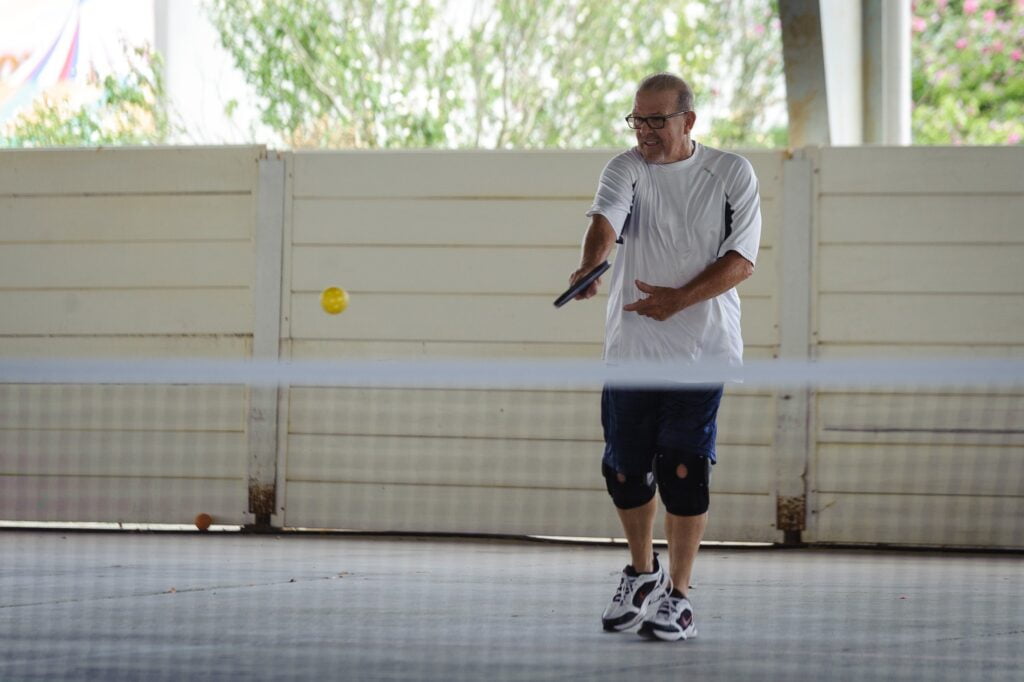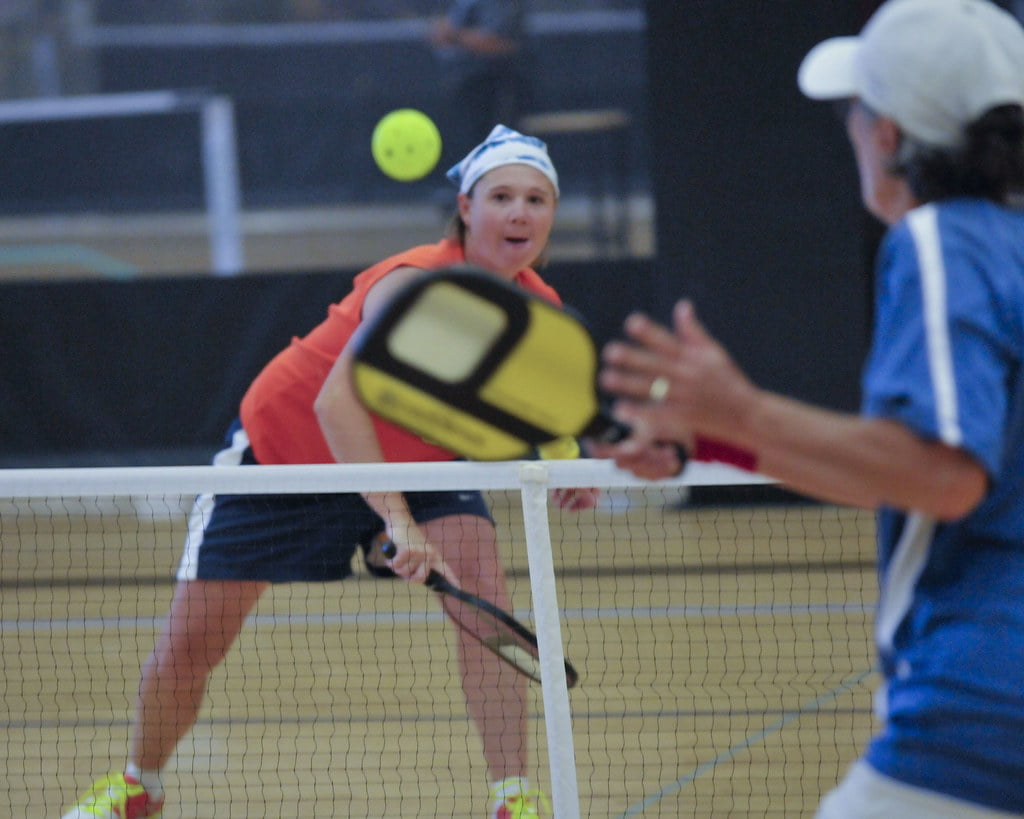Does The Ball Have To Bounce In Pickleball

Pickleball started in the 60s as a fun backyard game. Today, it’s a sport loved by many. It’s got a bit of tennis, a badminton splash, and a ping-pong dash.
Played on a small court with a low net, using paddles that are bigger than ping-pong ones and a ball as light as a whiffle ball.

Sun’s out, and the smack of a pickleball on a paddle echoes around. Great day for a match, right? But, hold on, there’s a little question tickling your brain: does the ball have to bounce in pickleball?
You’re not alone if that’s got you puzzled. Even regular players scratch their heads over this one.
Does The Ball Have To Bounce In Pickleball?

Absolutely, the ball does have to bounce in pickleball, and it’s not just a one-time thing. This rule, known as the “two-bounce rule,” is fundamental to the sport.
Here’s how it works

After the serve, the ball must bounce once before it’s returned by the receiving team. This means that you cannot volley (or hit the ball in the air) the serve.
Once the ball has been returned by the receiving team, the serving team must also let it bounce once before hitting it back. Again, you cannot volley the return of serve.
So, to sum it up: serve, bounce, return, bounce, return. This sets the initial rhythm of the play.
Once these two obligatory bounces have occurred, players can then choose to either let the ball bounce or volley it out of the air, making for a dynamic and exciting game. So yes, in pickleball, the ball certainly does have to bounce, but the fun begins when it doesn’t have to anymore!
Bounce Rule
In a Pickleball game, the “bounce rule” or “two-bounce rule” is one basic thing all players should know.
This rule means when the ball is served, each team must let the ball bounce one time before hitting.
So, the serving team waits for one bounce before hitting back serve and receive team should let one bounce before hitting serve too.
The idea of the “two-bounce rule” is the first team hitting the ball after the serve can’t hit (volley) the ball without bounce.
Same way, the team returning serve also can’t volley a serve.
When these two bounces are done, the ball can be volleyed or hit after a bounce.
The Importance of Bounce Rule

The “bounce rule, is an important Pickleball rule that greatly affects how the game is played.
It says that after a serve, the ball needs to bounce one time on each net side before players can start volleying.
So, the server’s team should wait for the bounce after the serve return, and the returning team lets the serve bounce too.
This rule changes the game in many ways. It stops volley-only playing, makes longer rallies, and helps players play with strategy instead of fast reactions only.
For new players, this rule is helpful because it gives them more time to get ready for the next move.
To know Pickleball better, it is good to start by learning the bounce rule.
The strategic uses of the bounce
The bounce in Pickleball is not just a rule but also a way for players to play better.
By letting the ball bounce, players get more time to make the next move and can turn a bad situation into a good.
Expert players sometimes use a move called ‘half-volley’, hitting the ball just after a bounce.
Done right, half-volley can confuse other players, making them make mistakes.
Changing between volleys and letting the ball bounce also can change other players’ timing, making chances to win points.
can you hit the ball twice in pickleball?
No, in Pickleball, you cannot hit the ball twice. Each player must hit the ball only once before it crosses the net to the opposing team’s side.
Hitting the ball twice would be considered a fault, resulting in a point for the other team or a loss of serve.
Exceptions to the Bounce Rule
A certain rule for bouncing in pickleball is there, called the “bounce rule.”
Mainly, this rule has one big exception. When the ball goes and lands in a place called a “non-volley zone” or “kitchen,” that rule changes.
This kitchen section is seven feet long and is on both net sides.
When a ball falls in the kitchen, players cannot hit it in the air (volley the ball). They should let it bounce first.
A player can hit the ball in the air if they are not inside the kitchen, even if the ball is above that area.
It is important to see where the player stands, not where the ball is flying.





![Can You Hit A Pickleball With Your Hand? [Answered]](https://pickleballtalks.com/wp-content/uploads/2023/07/Can-You-Hit-A-Pickleball-With-Your-Hand-768x432.png)
